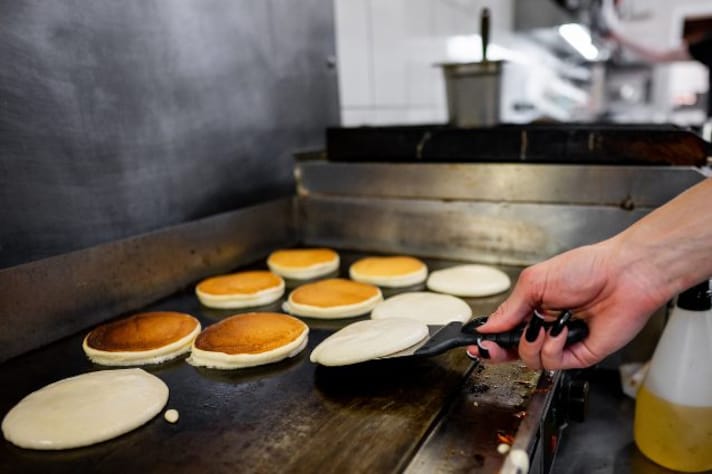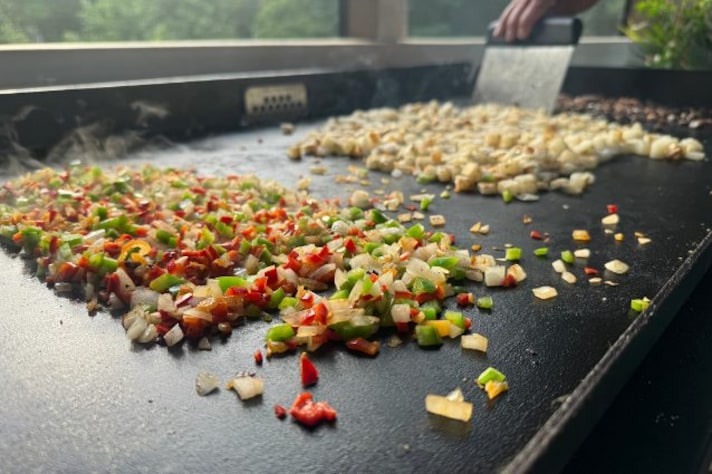How to Clean a Griddle (The Easiest Step-By-Step Method)
Cleaning a griddle is easier than you think! Start by cleaning it while it’s still warm, using a spatula to scrape off food debris, then wipe it down with paper towels, and for tough spots, add a bit of water to create steam. Avoid soap for seasoned griddles, and manage grease by scraping it off and using warm water or baking soda paste for stubborn areas.

A griddle is one of the most versatile tools in the kitchen. From crispy bacon to perfectly seared burgers, golden pancakes to charred vegetables, it’s your best friend for cooking large quantities quickly and evenly. But for all its magic, there’s one thing that seems to intimidate even the most seasoned home cooks: cleaning it. Don’t worry, dear reader, we’re here to tell you that keeping your griddle in tip-top shape is a breeze—easier than you might think! With the right approach, you’ll have it spotless and ready for your next feast in no time.
What is The Best Time to Clean a Griddle?
The best time to clean your griddle is actually right after you finish cooking, while it’s still hot. The heat helps to loosen the food particles and grease, making them easier to remove. There’s no need to wait for it to cool down completely—just let it sit for a couple of minutes so it’s safe to handle but still warm enough to make your cleaning job easier. You don’t have to take it off your stove or grill; just make sure you have everything you need on hand: a spatula or scraper, some paper towels, and if necessary, a little warm water or mild soap (although soap is often unnecessary and discouraged for seasoned griddles).

A Step-by-Step Guide to Clean Your Griddle
Now that your griddle is warm and ready, it’s time to tackle the cleaning process. Start by using your spatula or griddle scraper to gently remove any food debris or burnt bits stuck to the surface. The goal here is to get rid of the big stuff before moving on to finer cleaning. Work in small sections, scraping toward the edge of the griddle to collect the scraps.
Next, grab a few paper towels and wipe down the griddle’s surface to soak up excess grease and residue. If you find that some food is stubbornly sticking, add a little water to the griddle while it’s still warm (but not scorching hot) to create steam, which will help lift the residue. Let the steam do its magic for a minute or two, then use your spatula to scrape away any remaining bits.
For a deeper clean, you can use a soft cloth or sponge with a tiny bit of mild dish soap if absolutely necessary (particularly for stainless steel or non-seasoned griddles). But for seasoned griddles, like cast iron or carbon steel, avoid soap altogether to preserve the seasoning layer. Instead, stick to warm water and a thorough wipe-down.
Lastly, give the griddle one final pass with a clean, dry paper towel to ensure it's fully dried. If you have a cast iron or steel griddle, consider reapplying a thin layer of oil to protect the seasoning and prevent rust. And voilà—your griddle is now clean, seasoned, and ready for its next culinary adventure!

How to Deal with Grease on a Griddle
One of the trickiest parts of cleaning a griddle can be tackling that pesky grease. Grease likes to stick around, and if left too long, it can turn into a stubborn, sticky layer. The good news? It’s easier to handle than it looks. Start by scraping off as much grease as possible using a spatula or scraper. For really greasy jobs, you can even use a dedicated griddle cleaning pad or a small amount of coarse salt, which acts as a gentle abrasive.
Once the bulk of the grease is removed, a splash of warm water on the griddle’s surface while it’s still warm will help break down the remaining residue. You can use a damp cloth or paper towel to wipe it all away. For extra-tough grease, mix a little baking soda with water to form a paste—this natural cleaner will help lift off stubborn spots without damaging your griddle’s surface. Just remember to dry the griddle thoroughly afterward to prevent rust or any lingering residue.
;Resize,width=767;)



